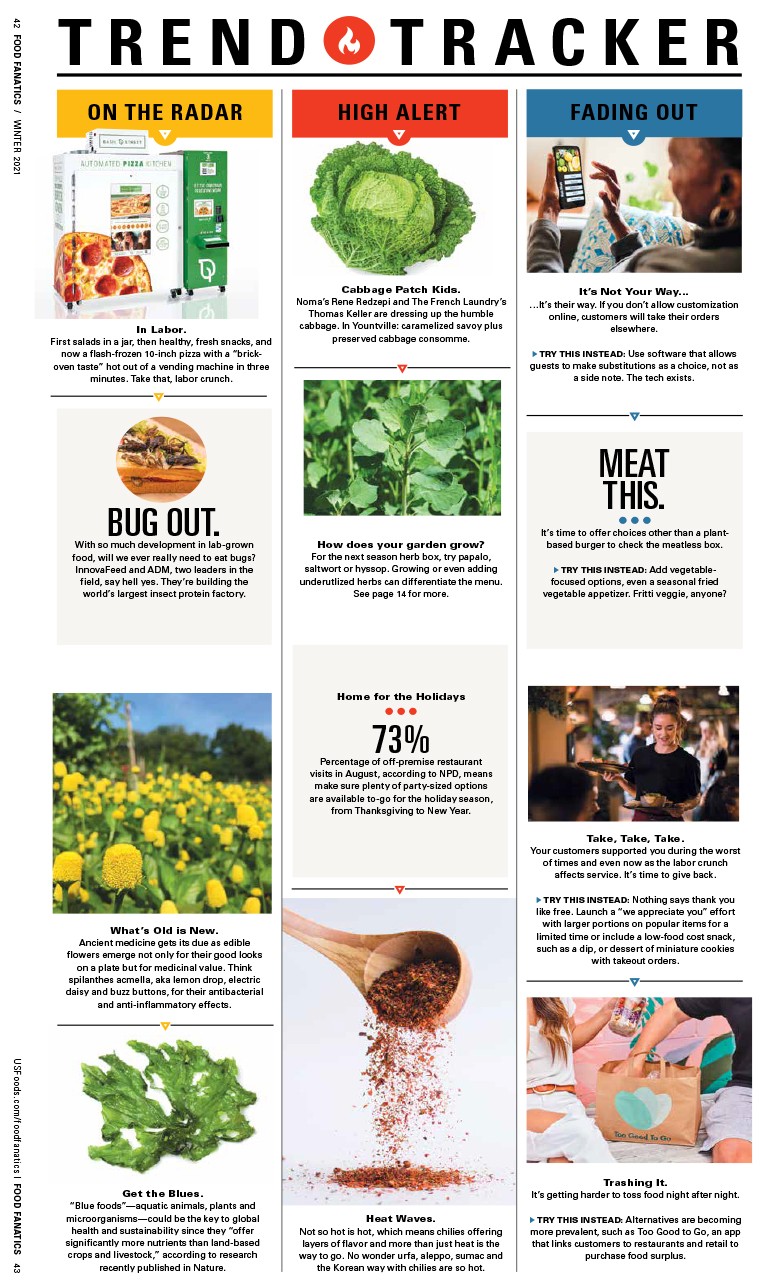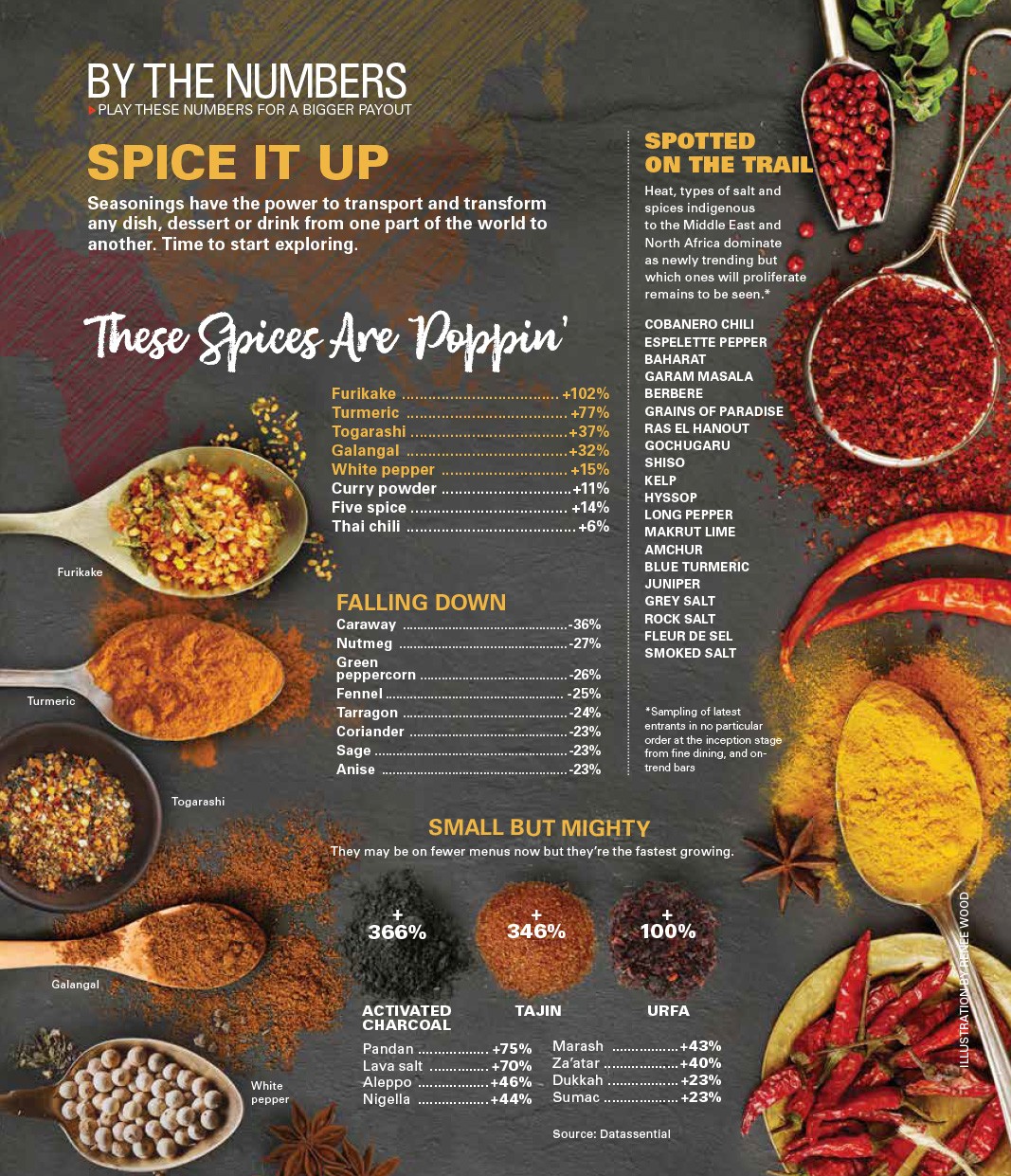To-May-To or To-Mah-To: Why Heirlooms Tomatoes are Hot
No matter how you slice it, heirloom tomato varieties are beloved. How chefs are taking advantage.
Nothing says summer like a ripe red tomato, except that some of the most coveted varieties now span the color spectrum. These are the glorious heirlooms, highly anticipated for summer, wildly popular among chefs and a far cry from the 4x5 tomatoes grown to the specifications of a box.
“The variety of colors, textures and flavors is amazing,” says Executive Chef Bruce Lefebvre of The Frog and The Peach in New Brunswick, N.J. “I just wish the season was longer.”
The demand for heirlooms has pushed growers into the hothouse, where a controlled environment can produce seasonal copycats. But these aren’t the late-summer treasures that chefs crave.
Over the Rainbow
Today’s heirlooms are bright red or orange, speckled green and earthy brown, lemon yellow, purplish or even striped like a zebra. Their sizes range from micro-plum to massive, at two pounds or more. Figuring out which types best suit a menu’s purpose can be a real art form, chefs say.
For example, Lefebvre perches the popular Brandywine (its bulbous shape is similar to the classic beefsteak) atop butter lettuce, garnished with strips of bacon, pine nuts and a cheddar emulsion. Jersey tomatoes—late summer beefsteak tomatoes unique to the state they’re named after—are better suited for gazpacho thickened the Spanish way (with bread), pureed with cucumbers, celery, red and green bell peppers, onions, garlic and fresh herbs.
Jack Strong, executive chef at Chinook Winds Casino Resort in Lincoln City, Neb., has taken advantage of the Brandywine’s prominent tomato flavor for bisque, while Alexandra “Alex” Guarnaschelli reaches for the Yellow German, a sweeter varietal with a shape similar to the Brandywine, to make tomato sauce.
The Speckled Roman, about five inches long and bright red with yellow streaks, also works well in a paste or sauce, according to Chef-owner Vittorio Ettore of Bistro 5 in Medford, Mass. Low on seeds, relatively firm and acidic, it’s one of the most visually striking heirloom tomatoes. Ettore says he loves the earthy flavor of Speckled Romans, which are featured in a sauce during the restaurant’s annual heirloom tomato celebration. He also smokes and purees the tomatoes for a crème brûlée.
Updating a Favorite
In the classic caprese salad, named after the Italian isle of Capri where it was invented, chefs are using heirlooms instead of the usual globes or beefsteaks. Chef AJ Black at Il Tesoro, with locations in Manhattan and Sanibel Island, Fla., plants colorful baby heirlooms in shades of bright yellow, purple and deep pink around an oozy plank of buffalo mozzarella, garnishing it with micro-basil and siding it with wedges of grilled bread brushed with olive oil.
In the hands of Chef Richard Sandoval of Toro Toro in Miami and Dubai, the caprese takes an even wilder turn. He starts with Green Zebra and KBX (yellow, medium heirloom) tomatoes, adds seedless watermelon balls, avocado and burrata, and drizzles the salad with a chipotle dressing.
At One Eared Stag in Atlanta, Chef-owner Robert Phalen takes tomatoes beyond the predictable. In his heirloom tomato salad, he dresses sliced cherry and full-sized heirloom tomatoes with an extracted tomato water made of herbs and plum tomatoes, then sprinkles the salad with diced preserved lemon and lays thin slices of housemade cured pork across the top.
“A tomato sandwich—thick slices of dead-ripe tomatoes well seasoned with salt and pepper between slices of soft white sandwich bread spread with rich mayonnaise—is pure joy.”
-Chef-owner Andrea Reusing at Lantern restaurant in Chapel Hill, N.C.
Phalen finds so many uses for heirlooms that he purchases additional ones in season to use throughout the year. “We will dehydrate, preserve and pickle as many as we can,” he says.
Ready to Eat
As heirloom popularity has grown, chefs have found the many varieties and their myriad uses ideal for special menus and seasonal promotions. It’s important to keep an eye on them, though, says John Broening, a self-professed heirloom tomato fanatic and executive chef at Denver’s Le Grand Bistro.
Buying them firm (but not underripe) and small (lacrosse-ball sized) is key to keeping food waste at bay, he says, noting that their three-day shelf life requires using them quickly. “The season here in Denver is about three months, from the middle of July to the middle of October. During that time, I pay a premium price, about $3.85 per pound wholesale. But the customers love them.”
Robert Sietsema is a New York-based writer whose passion for photography takes over during tomato season, when he shoots heirloom beauties throughout the city’s farmers markets.
Heirloom Cheat Sheet
Beam’s Yellow Pear: This early 19th century tomato is thumb-sized, exceedingly sweet, bright yellow and pear-shaped.
Black Prince: This early ripening variety is relatively small and round, with colors ranging from dark red to purplish.
Brandywine: Among the most popular heirlooms, these bulbous pink-red tomatoes date to the late 19th century when Amish farmers in Pennsylvania cultivated them. They are larger than most heirlooms, averaging over a pound, and prized for their strong tomato taste.
Cherokee Purple: One of the smaller heirlooms, globe-shaped, dark brownish-purple in color, with green highlights. Go for the small ones that are heavy for their size.
Green Zebra: Its name says it all: light green with pronounced darker green streaks that run longitudinally. A firm variety, it offers a tart, tangy flavor.
Speckled Roman: Bright red with yellow streaks, this five-inch-long specimen is a great paste tomato.
Yellow German: These are beefsteak shaped (like Brandywines), very juicy and mainly deep yellow in color. But veins of bright red stream up from the bottom of this bicolor variety, which is exceptionally sweet but also mild in flavor.
What's An HeirloomTraditionally, heirloom tomatoes represent cultivars that flourished in the remote past (typically a century ago or more) but were elbowed out of the way by commercial varieties that had more staying power but far less flavor. While commercial brands are hybridized, representing genetic crosses of several varieties, heirlooms are naturally occurring types specific to a geographic place. But now the term is also applied to newly created tomatoes that differ from the usual globes, plums, cherries and beefsteaks. |



